#gateway lorawan
Text
Gateway LoRaWAN da Radioenge Tutorial Completo
Neste tutorial você vai aprender instalar qualquer gateway LoRaWAN em qualquer placa compatível com Raspbian
O Gateway LoRaWAN da Radioenge é o único gateway fabricado no Brasil que possui homologação da Anatel e é facilmente integrado com Raspberry pi e Banana Pi.
1 Gateway LoRaWAN para que serve?
O gateway LoRaWAN nada mais é do que um dispositivo que faz a ponte entre os “end devices” e o servidor, de modo que consiga chegar até a aplicação, resumidamente ele tem a mesma função que o modem da sua…
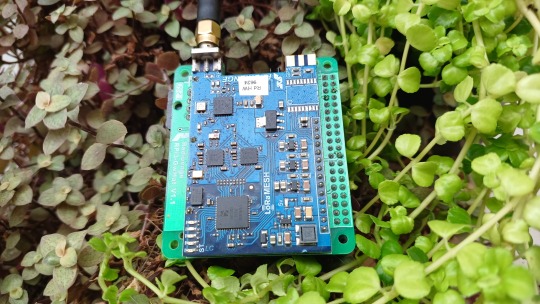
View On WordPress
#arduino lorawan gateway#cisco gateway lorawan#gateway lorawan#gateway lorawan arduino#gateway lorawan dragino#gateway lorawan outdoor#gateway lorawan raspberry pi#indoor gateway lorawan#iot gateway lorawan#kerlink gateway lorawan#lorawan gateway aliexpress#lorawan gateway amazon#lorawan gateway australia#lorawan gateway aws#multitech gateway lorawan
0 notes
Link
LG1301-SE is the LoRaWAN gateway. It works with LoRaWAN node LN610 only. It integrates Standard LoRaWAN protocol V1.0 Class C.

NiceRF: How to use LoRaWAN Gateway LG1301-SE
1. Power on of LoRaWAN Gateway
After powered on, the power led will light on to indicate, the LoRaWan gateway start the initialization. After 15s, the Tx LED will blink once to indicate the Linux system is ready, and then 5s later , the status LED will blink once per second which indicate the whole system is ready. Then it enters the normal working mode.
2. Normal Working Mode of LoRaWAN Gateway
In normal working mode, when payload is inputted to LN610, LN610 will transmit the packet to LG1301-SE automatically. After LG1301-SE received the data, it will output the payload in uplink format by serial interface.
When payloads with downlink format are inputted to LoRaWan gateway LG1301-SE.
LG1301-SE will transmit the packet automatically. LN610 will compare its Device Addr with the received packet. If the Device Addr is match, it will output the payload by serial interface.

Uplink/downlink format (All the data are in HEX format)
Uplink format: ( Data from the node to the gateway )
Header ( 5 bytes) + Length ( 1 byte) + Device Addr ( 4 bytes) + Payload + Frame end (2 bytes)
Header: fixed to “$lora”;
Length: payload length + 4
Device Addr: MSB, Target Device Addr, only the product with this Device Addr will receive the message when send downlink packet.
Frame end : fixed to 0x0d 0x0a
Example:
LN610 input hex data:
AA BB CC DD EE FF
LG1301-SE output hex data:
24 6C 6F 72 61 0A 01 B9 EC DC AA BB CC DD EE FF 0D 0A
Parse:
24 6C 6F 72 61 --------------------- Header
0A --------------------- Length
01 B9 EC DC --------------------- Device Addr
AA BB CC DD EE FF --------------------- Payload
0D 0A --------------------- Frame end
Downlink format : (Data from the gateway to the node)
Format: Device Addr ( 4 bytes) + payload
Example:
LG1301-SE input hex data:
01 B9 EC DC 11 22 33 44 55 66
LN610 output hex data:
11 22 33 44 55 66
Parse:
01 B9 EC DC --------------------- Device Addr
11 22 33 44 55 66 --------------------- Payload
Note:
The LN610 must join the network before communicate with LG1301-SE.
3. Setting mode of LoRaWAN Gateway
In normal working mode, press SET key to enter setting mode. The status LED will be turned on to indicate. Press SET key again to exit setting mode and back to normal working mode, the status LED will blink once per second to indicate.
User can use our specified PC software to configure LoRaWan gateway LG1301-SE.

Below is the PC software interface.
In setting mode , the gateway supports three operation on node.
Add node into the network
User input the Device Addr、NwkSKey and AppSKey of node. Click [Add Node] button , then the node will be added into the network.
Note: The Device Addr、NwkSKey and AppSKey of node can be read out in PC software of node.
Delete node from the network
Input Device Addr in block ”Delete node”,and click [delete] button,then the node with this Device Addr will be deleted from the network.
Once the node is deleted from the network, the gateway will ignore all the information from the node and won’t send message to the deleted node.
Read out the node list of the network
Click [ Read ] button can read out the node list.
When PC software opened, the node list will be read out automatically.
4. Parameters for LoRaWAN Gateway
UART : 115200, 8, N, 1
Tx power : 23dBm
Tx frequency and Data Rate:
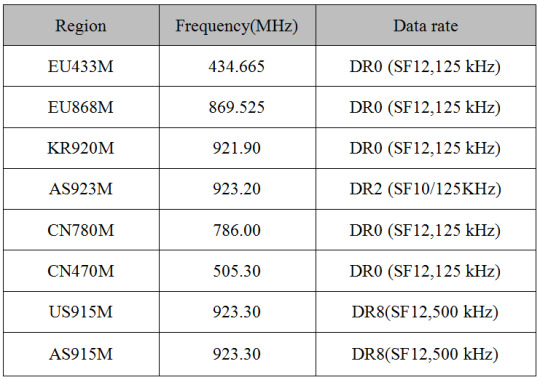
Receive Frequency channel :

Note:
The Tx rate of LG1301-SE is fixed as the Rx rate of LN610, the Rx data rate of LG1301-SE is not fixed which match to the LN610’s Tx rate automatically.
The Tx frequency of LG1301-SE is fixed, but it can receive the data from all the 8 channel simultaneously.
The maximum MACPayload size length (M) of LG1301-SE is 51bytes, the minimal Tx time interval is 2s.
2 notes
·
View notes
Text
RAK Anniversary Sale | Get 8% off on IoT Products
Upgrade your hotspot or LoRaWAN® gateway setup today. RAK antennas + Helium accessories at 8% off.
Valid until July 15, 2022.

No code needed.
Shop now: https://bit.ly/anniversary-antenna-sale
2 notes
·
View notes
Text
Unlocking Efficiency and Accuracy with Gateway Precision Technologies

In the rapidly evolving landscape of technology, businesses are constantly seeking innovative solutions to enhance their efficiency and precision. One such solution that has gained prominence is Gateway Precision Technologies. This cutting-edge technology, often referred to as a Precision Gateway, is revolutionizing industries by providing unparalleled accuracy, reliability, and speed.
For More:
0 notes
Text
What is the difference between the LoRaWAN wireless module and LoRa gateway wireless transmission technology?
Many individuals find it challenging to differentiate between the LoRaWAN wireless module and LoRa gateway wireless transmission technology, as well as their applications within the realm of IoT.
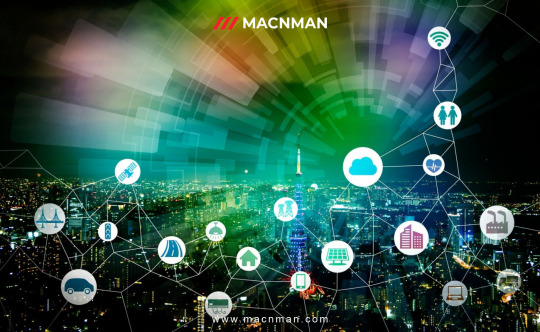
LoRaWAN specifically pertains to the networking protocol found within the MAC (Media Access Control) layer. In contrast, LoRa serves as a protocol within the physical layer. Although current LoRaWAN networking implementations utilize LoRa as the physical layer, it's worth noting that the LoRaWAN protocol also allows for the use of GFSK (Gaussian Frequency-Shift Keying) as the physical layer in specific frequency bands. From a network layering perspective, LoRaWAN can adopt various physical layer protocols, just as LoRa can serve as the physical layer for other networking technologies.
LoRa, as a technology, falls under the category of LPWAN (Low-Power Wide-Area Network) communication technologies. It represents an ultra-long-distance wireless transmission method based on spread spectrum technology, pioneered and promoted by Semtech in the United States. This approach revolutionizes the previous trade-off between transmission distance and power consumption, offering users a straightforward system capable of achieving extended range, prolonged battery life, and increased capacity. Consequently, it expands the capabilities of sensor networks. Currently, LoRa predominantly operates within free frequency bands globally, including 433/868/915MHz, among others.
On the other hand, LoRaWAN wireless communication stands as an open standard defining the communication protocol for LPWAN technology based on LoRa chips. LoRaWAN defines the Media Access Control (MAC) layer at the data link level and is overseen by the LoRa Alliance. It's crucial to distinguish between LoRa and LoRaWAN because companies like Link Labs utilize a proprietary MAC layer in conjunction with LoRa chips to create more advanced hybrid designs, such as Link Labs' Symphony Link.
LoRaWAN typically employs a star or star-to-star topology, which is generally considered superior to mesh networks due to advantages such as conserving battery power and extending communication range. In a star topology, messages are relayed to a central server through gateways, and each end node can transmit data to multiple gateways. These gateways then forward the data to the web server, where tasks like redundancy detection, security checks, and message scheduling are executed.
In summary, LoRa encompasses solely the link layer protocol, making it suitable for point-to-point (P2P) communication between nodes. In contrast, LoRaWAN includes the network layer, allowing data to be sent to any base station connected to a cloud platform. By connecting the appropriate antenna to its socket, the LoRaWAN module can operate at different frequencies, offering versatility in its applications.
0 notes
Text
The Things Network: Primeiros passos
The Things Nework é o maior network server de LoRaWAN do planeta, sendo totalmente colaborativo e gratuito. Venha aprender a usar
A The Things Network ou TTN é um servidor de rede LoRaWAN colaborativa que permite que qualquer pessoa ou empresa possa ser um ponto de conexão LoRaWAN como também pode utilizar a cobertura já existente para conectar os end devices tudo de forma gratuita.
1 O que é The Things Network?
A TTN é um network server criado em 2015 com o objetivo de criar uma cobertura global e colaborativa de LoRaWAN…
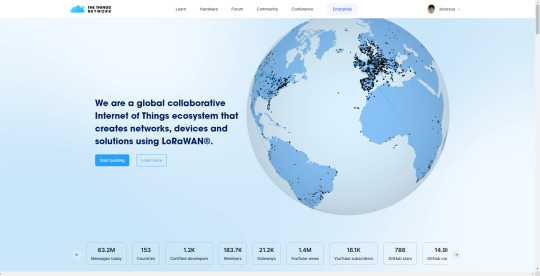
Ver no WordPress
#arduino lorawan#arduino lorawan library#esp32 lorawan#lorawan#lorawan application server#lorawan concentrator#lorawan devices#lorawan distance#lorawan gateway#lorawan network#lorawan the things network#the things network#the things network gateway#the things network map
0 notes
Photo

UniConverge Technologies offers products for smart irrigation solutions.
Features:
Wireless Irrigation Controller
• Internet Only needed at the gateway
• Range is 3km Radius
• Can be controlled using Cloud app/ Mobile app
• Integration with field Sensors
• Reduce wiring in the field
• Easy to install
• Solar Powered /No wiring for the power needed
Irrigation & Fertigation Controllers
• Schedule based Irrigation
• 2 Independent Programs
• 4 Start time
• Total 6 valve control including 4 Station valves with Fertigation and a Bypass valve to switch between irrigation and fertigation
• Battery backup so user can program even during no electricity
• Low Flow /Rain Sensor Support
• Pump Starter relay support with pump initiation time
Auto Back Flush Controllers
• Time-Based Flushing
• Differential pressure-based Flushing
• Manual Flushing
• Looping Detection
• 4 potential Free output for valve/motor/Actuator
• 9 to 24 VDC operations
• Can be customized for different types of media filterers
Temperature & Humidity Sensor
• Battery/ Solar Powered
• Wide range of Sensor Selection
• Low Power Consumption
• Small Form Factor
• IP65 Enclosure
• LoRaWAN Compliant
• Range 3km
• Comes with a stainless steel probe
Learn more- https://lnkd.in/e-Z8YZpT
#smartirrigation #agritech #smartfarming #smartirrigationsolution #solutions #lorawan #wireless #gateway #internet #sensors #temperature #detection #pressure #valve #valves #pump #flow #humidity #motor #actuator #irrigation #controllers #wireless #auto #sensor #controller #control #range #startupindia #madeinindia #atmanirbharbharat #UniconvergeTechnologies #UCTrobotics
#smartirrigation#smart irrigation market#agritech#solutions#internet#lorawan#wireless#gateway#sensor#temperature#controllers#startup#startupindia#madeinindia#atmanirbhar#uniconvergetechnologies#uctrobotics
0 notes
Text
RaspberryPi 4 Basic Kit is Now Available
The Raspberry Pi 4 Kit is now available Spread the good news or refer it to your friend using our Affiliate Program and get a 5% commission on each kit sold.
Here are the Raspberry Pi 4 Kits we have in store for all of you:

We have three variants and three different options available:

RAK Raspberry Pi 4 Kit is the latest addition to the popular Raspberry Pi series. It offers an excellent increase in processor speed, multimedia performance, memory, and connectivity over the previous generation Raspberry Pi 3 Model B+, while maintaining backward compatibility and similar power consumption.

Build your developer gateway for LoRaWAN® with the RAK Raspberry Pi 4 Kit for LoRaWAN®. It includes a Pi 4 (4 GB), a ready-to-use microSD card with Raspbian OS pre-loaded, a case, a power supply, a RAK2287 concentrator, a PiHAT for the concentrator, and a LoRa® antenna.

The Raspberry Pi 4 Model B (4 GB) is the best single-board computer for developing your IoT project and launching your first LoRaWAN® gateway.
Become a RAKwireless Affiliate and get your own Raspberry Pi 4 Basic Kit here: https://store.rakwireless.com/collections/raspberry-pi
3 notes
·
View notes
Text
LoRaWAN Series - Gateways & Nodes, Build for Raspberry Pi, Pico, Espressif, and much more
Introducing our LoRaWAN Series: the ultimate solution for seamless IoT integration! 🌐 Explore our lineup of Gateways & Nodes, compatible with TheThingsStack, Chirpstack & more. With long-range communication capabilities, your projects are limitless. !
Learn More - https://kck.st/3PQaIc6

0 notes
Text
Smart Parking Market Set to Skyrocket with 17.8% CAGR, Surpassing US$ 54.8 Billion by 2033
The smart parking market is projected to grow at a compound annual growth rate (CAGR) of 17.8% from 2023 to 2033. Although the market is estimated to be worth US$ 10.7 billion in 2023, it is expected to reach a market share of US$ 54.8 billion by 2033. A growing number of advanced guided park assist systems are being introduced, and fewer parking spaces are becoming available.
The rising population around the world along with the technological advancements in the automotive industry and its components are fueling the sales of smart parking systems.
The small spaces for designated parking demand a platform that provides the parking information, distance, and other details. Smart cloud integration, IoT integration, and vehicle detection sensors provide services like smart spots and mobile parking.
Smart parking can be explained as the joint parking strategy of technology and human innovation that saves time, fuel, and space while enhancing the overall parking experience.
The addition of a central server that inputs through sensors, cameras, parking meters, and smart city APIs and delivers output to management, authorities, and third-party solutions. This provides an ease to the end user in finding, purchasing, and locating a parking space for their vehicles.
Traffic and parking authorities across the globe are also promoting smart parking systems as it cuts the hassle and decreases manual inspection and parking allocation.
Vehicles with advanced transmission along with increased awareness around machine-to-machine communication have also limited the market space and have gained value for the smart parking market.
Get a Sample PDF of the Report https://www.futuremarketinsights.com/reports/sample/rep-gb-4511
Key Takeaways
The United States market leads the market in terms of market share. The market is anticipated to cross a value of 11.0 billion by 2033. The regional market is expected to record a CAGR of 12.9% between 2023 and 2033.
The smart parking market in China leads the space in terms of CAGR. It thrives at a CAGR of 28.7% during the forecast period. The market is likely to reach US$ 9.6 billion by 2033. The rapid growth is attributed to the increased population and the introduction of new parking guidelines.
The hardware component is likely to thrive in the component category due to their significant price and one-time application. It is expected to record a CAGR of 15.3% during the forecast period.
The guided park assist systems segment tops the system tally with a CAGR of 16.4% between 2023 and 2033. The growth is attributed to the autonomous parking operations that are auto-enabled in most of the high-tech vehicles.
Competitive Landscape
Providing full support for parking operations for saving time, fuel, and space is the motive of vendors while designing smart parking systems. The prominent players are focused on sensory technology that is also integrated with cloud storage. The companies are also involved in mergers & acquisitions and strategic partnership with other companies to increase the supply chain and distribution channel. The key players in the market include Siemens, Cisco Systems, Huawei Technologies, Delphi Technologies, Intercomp S.p.A.
Recent Development:
Siemens and TASS International (A Siemens business) has collectively introduced UrbanSmartPark. It is a European initiative that is currently going through its test phase on real-world scenarios. It is likely to provide information around accident databases, manually created scenarios.
Cisco Systems launched its IoT Solution with LoRaWAN to enable smart parking operations. While LoRa delivers parking sensors, Cisco delivers the IXM LoRa Gateway for Frankfurt E-parking Architecture.
Ask An Analyst https://www.futuremarketinsights.com/ask-the-analyst/rep-gb-4511
Key Segments
By Component:
Hardware
Sensors
Cameras
Parking Meters
Digital Guidance Signage
Others
Software
Parking Management Platforms
SDK/API
Services
Consulting
Integration & Support Services
Device Management Services
By System Type:
Guided Park Assist Systems
Smart Park Assist Systems
By Sensor Technology:
Ultrasonic Sensors
RFID
Image Sensors
Others
By Application Area:
Commercial
Government
Corporate
By Region:
North America
Latin America
Europe
Asia Pacific (APAC)
The Middle East & Africa (MEA)
0 notes
Text
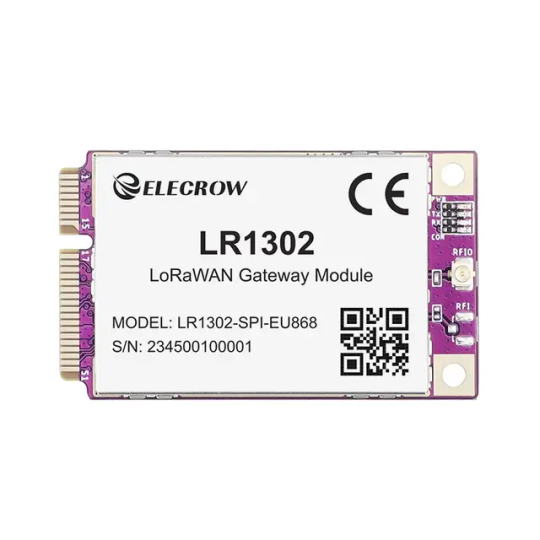


📢 #Elecrow Lora Series Product #NewArrival 👋
⭐ Introducing the LR1302 #LoRaWAN Long Range Gateway Module, which supports 8-channel data transmission for the connection and data transmission of more devices.🔥
📌https://www.elecrow.com/lr1302-lorawan-gateway-module-spi-eu868-sx1302-long-range-gateway-module-support-8-channels.html?utm_source=tumblr&utm_term=idd=2
#WirelessCommunication#InternetOfThings#SmartCity#IoTDevices#LPWAN#SensorNetworks#SmartHome#IndustrialIoT
1 note
·
View note
Text
GPIOs do LoRaMesh da Radioenge: Portas digitais
Aprenda como usar as GPIOs do módulo LoRaMesh da Radioenge
As GPIOs do LoRaMesh da Radioenge possibilita que possamos fazer aplicações de automação com um uso reduzido de hardware, dedicando apenas ao circuito de chaveamento (se necessário) e de alimentação.
No total temos no LoRaMesh 8 GPIOs sendo todas configuráveis como entrada ou saída digital e duas como leitura analógica. Porém neste post vamos apenas abordar as portas digitais.
Por qual motivo…
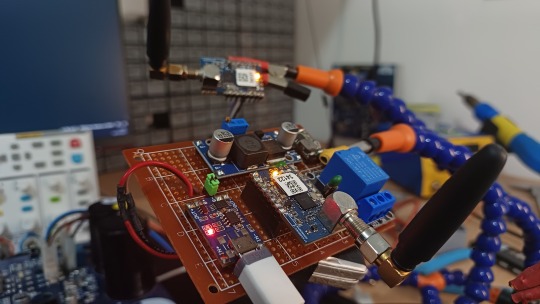
View On WordPress
#lora mesh arduino#lora mesh chat#lora mesh device#lora mesh library#lora mesh module#lora mesh network#lora mesh network raspberry pi#lora mesh protocol#lora mesh radio#lora mesh range#lora vs lorawan#loramesh#lorawan#lorawan devices#lorawan gateway#lorawan network#mesh lora
0 notes
Text
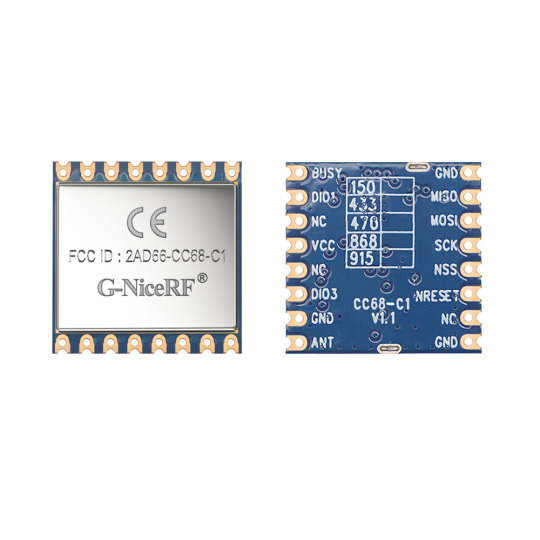
RF Transmitter and Receiver: Key Components in Wireless Communication
RF (Radio Frequency) transmitters and receivers are fundamental components in modern wireless communication systems. These components play a pivotal role in enabling various wireless technologies, from mobile phones to Wi-Fi routers, to operate seamlessly. In this article, we will explore the significance of RF transmitter and receiver in wireless communication and delve into their essential functions and applications.
RF Transmitter: Sending Signals Wirelessly
An RF transmitter is a crucial element in any wireless communication system. It is responsible for converting electrical signals into radio waves that can travel through the air and be received by compatible devices. RF transmitters are found in a wide range of applications, including radio broadcasting, remote control systems, and data transmission.
One of the key features of an RF transmitter is its ability to modulate the carrier signal with the information to be transmitted. This modulation process allows the transmitter to encode data, voice, or other forms of information onto the radio waves. The modulated signal is then amplified and broadcasted through an antenna.
In modern wireless technologies, such as Bluetooth and Wi-Fi, RF transmitters are the driving force behind the wireless connectivity that allows devices to communicate with each other over short or long distances.
RF Receiver: Capturing and Decoding Signals
On the receiving end, the RF receiver is responsible for capturing the transmitted radio waves, demodulating them, and converting them back into electrical signals that can be processed by electronic devices. RF receivers are integral components in devices like car radios, GPS systems, and satellite television receivers.
The receiver's demodulation process is crucial because it extracts the original information from the modulated carrier signal. This process allows the receiver to recover the transmitted data, audio, or video signal accurately. In essence, the RF receiver acts as the gateway for converting radio waves into usable information.
Applications of RF Transmitters and Receivers:
Wireless Communication: RF transmitters and receiver is the backbone of wireless communication system, enabling devices to transmit voice, data, and multimedia content over the airwaves. They are vital for mobile phones, two-way radios, and wireless Internet connections.
Remote Control Systems: Many remote control devices, including TV remotes, garage door openers, and toy controllers, rely on RF transmitters and receivers to send and receive signals.
Telemetry and Data Acquisition: In industries like agriculture and environmental monitoring, RF technology is used to collect data wirelessly from remote sensors and devices.
Security Systems: Wireless security systems, such as home alarms and surveillance cameras, use RF transmitter and receiver for communication between sensors and control panels.
Conclusion:
RF transmitters and receivers are the unsung heroes of the wireless world, making it possible for us to communicate, control devices remotely, and access information seamlessly. As technology continues to advance, these essential components will continue to evolve and play a pivotal role in our increasingly connected world. Whether it's sending a text message, streaming a video, or unlocking your car with a remote, RF transmitter and receiver is at the heart of it all, making our lives more convenient and interconnected.
For details, please click:
Or click:https://www.alibaba.com/product-detail/G-NiceRF-CC68-C1-160mW-433MHz_1600914212665.html?spm=a2747.manage.0.0.78e071d2L4s02Q
For consultation, please contact NiceRF (Email: [email protected])
0 notes
Text
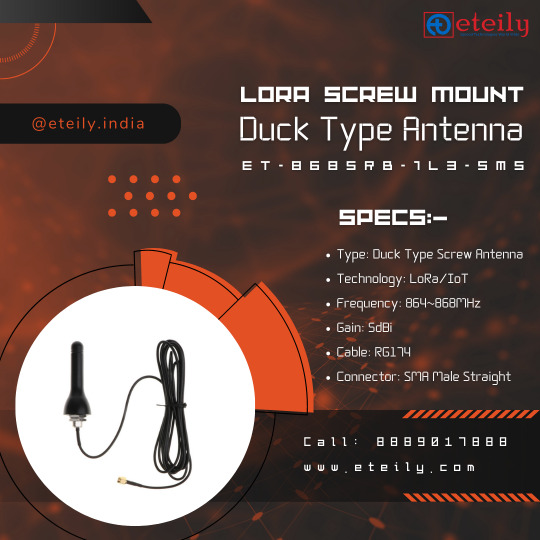
IoT LoRa Screw Mount Duck Type Antenna Manufacturers
ETEILY make LoRa Antenna's are high-performance, high gain, best quality. Eteily provides LoRa Antenna for External, Internal and outdoor gateway's. LoRa Antenna frequency includes 915MHz, 868MHz, 433MHz, 410MHz, 865MHz, etc. We provide LoRa LPWAN Gateway Antenna, Helium Minor Antenna all over the world.
IoT LoRa LPWAN antennas are designed to enable long-range communication with IoT devices using the LoRaWAN protocol. LoRaWAN antenna helium technology is designed for low-power, long-range communication, and LoRaWAN is one of the most popular LPWAN protocols.
Download Catalogues
High gain IoT antenna is a critical component of an IoT LoRa LPWAN system, as it is responsible for transmitting and receiving signals to and from the IoT devices. Best LoRa antenna typically operates at the Industrial, Scientific, and Medical (ISM) frequency bands, which are unlicensed frequency bands, and has a range of several kilometers. We are also manufacturer and suppliers of RF antenna in Delhi, Mumbai, Chennai, Hyderabad, Pune, Bangalore, Kolkata and Ahmadabad.
#IoT Lora LPWAN#LPWAN Antenna#IoT Antenna#Lora Antenna#LoRa LPWAN Antenna#LPWAN antennas - NB-IoT#Sigfox LPWAN Antenna#868mhz antenna#ISM LPWAN Antenna#LPWAN and ISM Antennas#LoRa Antennas: Long-Range IoT#Lora Wan Antenna#Lora communication antennas#Helium Minor Antenna in India#Buy SIGFOX/LORA ANTENNA#915MHz LoRa Antenna#LORA - Long Range - IOT#Lora Antenna 868mhz#Buy LoRa (868MHz/915MHz)#Sigfox Antenna Kit in India#Lora Module 868MHz-915MHz#GSM 2G 3G 868Mhz#1800Mhz LoRa antenna#868 Mhz - Radio Antennas#868MHz LoRa 10dBi Fiberglass Antenna#Outdoor Antenna 920~925 MHz#High Gain 868mhz/915mhz Lora Antenna#Outdoor Antenna IOT lorawan 433mhz#Miniature antenna for IoT devices#Lora Antenna 915mhz
0 notes
Text

#The beacon#Badge constantly broadcasts#iBeacon information according to settings. It has two built-in CR2032 button cells. The broadcasting interval is 1 second. The maximum stan#beacon is mainly used for#indoor#tracking. It can also be attached to assets and therefore used for#asset tracking with the help of our#Bluetooth#gateways.#BeaconBadge#bluetoothgateway#lora#lorawan#iot
0 notes
Text
How do you handle water meter reading using Lora (Raspberry Pi, Arduino, Lorawan, IoT)?
Install a LoRaWAN Gateway: Begin by setting up a LoRaWAN gateway. This gateway acts as a receiver for data transmitted by LoRaWAN devices and forwards it to the network server. It connects to the internet and communicates with LoRaWAN devices within its coverage area.
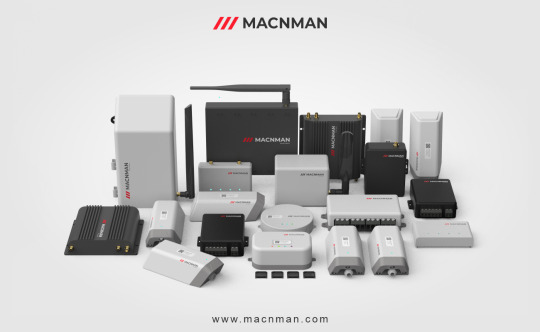
Attach LoRaWAN Modules to Water Meters: Next, equip your water meters with LoRaWAN modules or sensors. These modules are responsible for gathering important data, such as water consumption readings, from the meters.
Develop Firmware/Software: Program your Raspberry Pi or Arduino device to collect data from the water meters through the LoRaWAN modules. This programming may involve utilizing the LoRaWAN library or SDK provided by the module manufacturer.
Set Up a LoRaWAN Network Server: Install and configure a LoRaWAN network server. This server will receive and handle data from the water meters. Its functions include managing device registrations, routing messages, and storing data.
Ensure Secure Data Transmission and Encryption: Utilize LoRaWAN protocols to securely transmit the water meter readings from your Raspberry Pi or Arduino to the network server. LoRaWAN uses AES encryption to safeguard data privacy during transmission.
Data Processing and Storage: Once the network server receives the data, process it as needed. Extract the relevant water consumption readings and conduct any necessary calculations or validations. Store the data in a database or another suitable storage system.
Integration and Visualization: To make sense of the data, integrate it with your chosen IoT platform or application. This integration allows for further analysis and visualization. Consider creating a web-based dashboard or a mobile app to present the water consumption data in a user-friendly and informative manner.
It's important to keep in mind that the specific steps and details of implementation may vary based on the hardware and software components you select and any unique requirements associated with your water meter system. Adapt the above steps as necessary to align with your specific setup and development environment.
0 notes